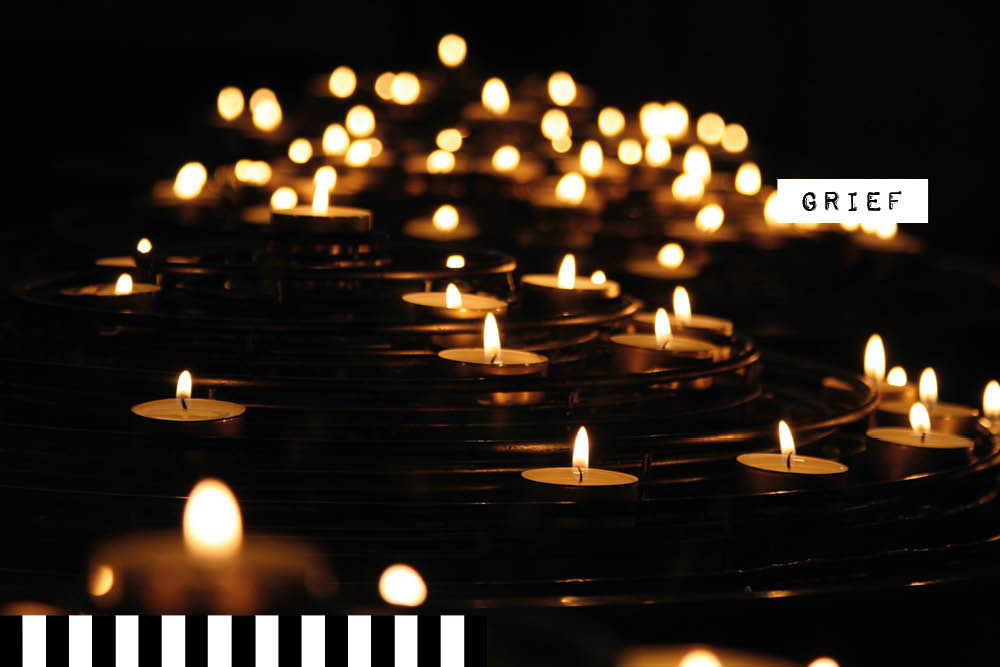It’s okay not to be okay: a look into how we actually grieve

At some point, everyone will experience the complicated process that is grief. From losing a loved one to going through a traumatic experience, there are many reasons that someone may need to grieve–and all of them are valid.
Grief affects us both physiologically and psychologically, from raising our chances of having a heart attack to creating a perfect environment for major depression to develop. But how are we meant to handle grief, and how do we actually handle it?
We dove into what the grieving process looks like, and spoke with a noted therapist in the field about why the commonly referred to”5 Stages of Grief” might not tell the whole story.
WHAT DOES GRIEF LOOK LIKE?
According to the Kübler-Ross model, there are 5 stages of grief. Denial, the first stage in the grief process, may leave you numb and in shock. It may be all you can do to get through the day, and a sense of apathy may follow you through the day.
Anger then comes second, leaving the numbness that you initially felt and replacing the ice in your veins with fire. Afterwards, you’ll begin to bargain.
At this point, “what-ifs” are common, and you might find yourself praying, asking a higher being for help, or searching for a nonexistent solution.
Once you’ve passed through the bargaining stage, you’ll hit a wall of depression as you begin to accept what has happened.
Finally, you’ll reach the acceptance stage–and this stage will often fluctuate. Some days you’ll wake up feeling okay, and other days will see you back in the anger phase. That is okay, understandable and normal.
HOW CAN YOU WORK THROUGH GRIEF?
While the Kübler-Ross model is widely-known, it isn’t applicable to every situation. Kristin A. Meekhof, a therapist and author on grief, feels that the model just isn’t broad enough to cover how grief looks like in all individuals.
“I think there is some truth to the 5 Stages of Grief,” said Meekhof. “However, ‘stages’ implies that you move through one to another in a sequence or linear pattern, and in my personal and professional experience, grief isn’t so neatly packaged in these stages.
“There is not a “One Size Fits All” model when it comes to grief. Each person is so unique and sure, there are similarities among the bereaved, but each person I’ve met and listened to and read about is very unique in their approach.”
It’s normal to bounce between anger and bargaining, or restart the process entirely after a breakdown–in these instances, you’re not grieving wrong, you’re just grieving.
Feelings, emotions and experiences affect everybody differently, and there is no right or wrong way to grieve.
“I do believe it is possible to accept what has happened to you, but you choose how you will carry it with you,” said Meekhof. “You can’t replace a person you deeply loved, and so a part of you will continue to grieve; however, it does not have to block you from experiencing joy and healing either.”
LISTEN TO YOUR BODY
Grief also affects us physically, opening the door to insomnia, lowering the immune system, and increasing the risk of heart attack six-fold.
When these symptoms arise, it’s important to not only recognise them, but to also give yourself time to heal. That might include taking time off work, re-evaluating your routine, or visiting your GP for advice on possible treatments.
“Grief can create a large blind spot in our mind and it is challenging to see physical and emotional changes within ourselves,” said Meekof. “It is important to listen to our bodies and advocate for our health if something doesn’t feel right and/or pain persists.”
It’s important to feel your emotions in their fullness and not ignore what your body needs. If you need to cry, cry. If you need to sleep, sleep.
In some ways, grief is a selfish process, because it has to be. Whether you’ve lost a friend, family member, or are mourning something in your own life, the grieving process is all about your feelings.
In her experience, Meekhof said that it is important to face those feelings, rather than compartmentalise them.
“Tucking grief away can create obstacles in other areas of life because they are often trying to override these feelings of sadness and hopelessness,” said Meekhof.
Experiencing grief may bring up feelings that you had previously buried or repressed, so it’s important to have coping mechanisms in place as you explore your feelings.
“I’ve found meditation, yoga, exercise, and journal writing to be very beneficial,” said Meekhof. “I know that the individuals I’ve worked with who do one or all four of these report them to be a positive experience and the practices become integrated into their daily routine.”
SPEAK TO OTHERS, NO MATTER HOW LONG IT’S BEEN
As the grieving process can be complex and difficult to navigate, Meekhof recommends speaking to a trusted therapist or counsellor as you work your way through it–no matter how long it’s been since the grieving process began.
“I’ve had people come to me years after their loved one has died and said they never took time to grieve because they were so afraid of the pain,” said Meekhof. “It is never too late to grieve your loved one.”
For those experiencing bereavement, a helpline has been set up by the Bereavement Trust at 0800 435 455, offering support and comfort from 6pm to 10pm daily.
Additionally, Samaritans offers a 24/7 service at 116 123 for anyone dealing with a difficult situation, including grief.












